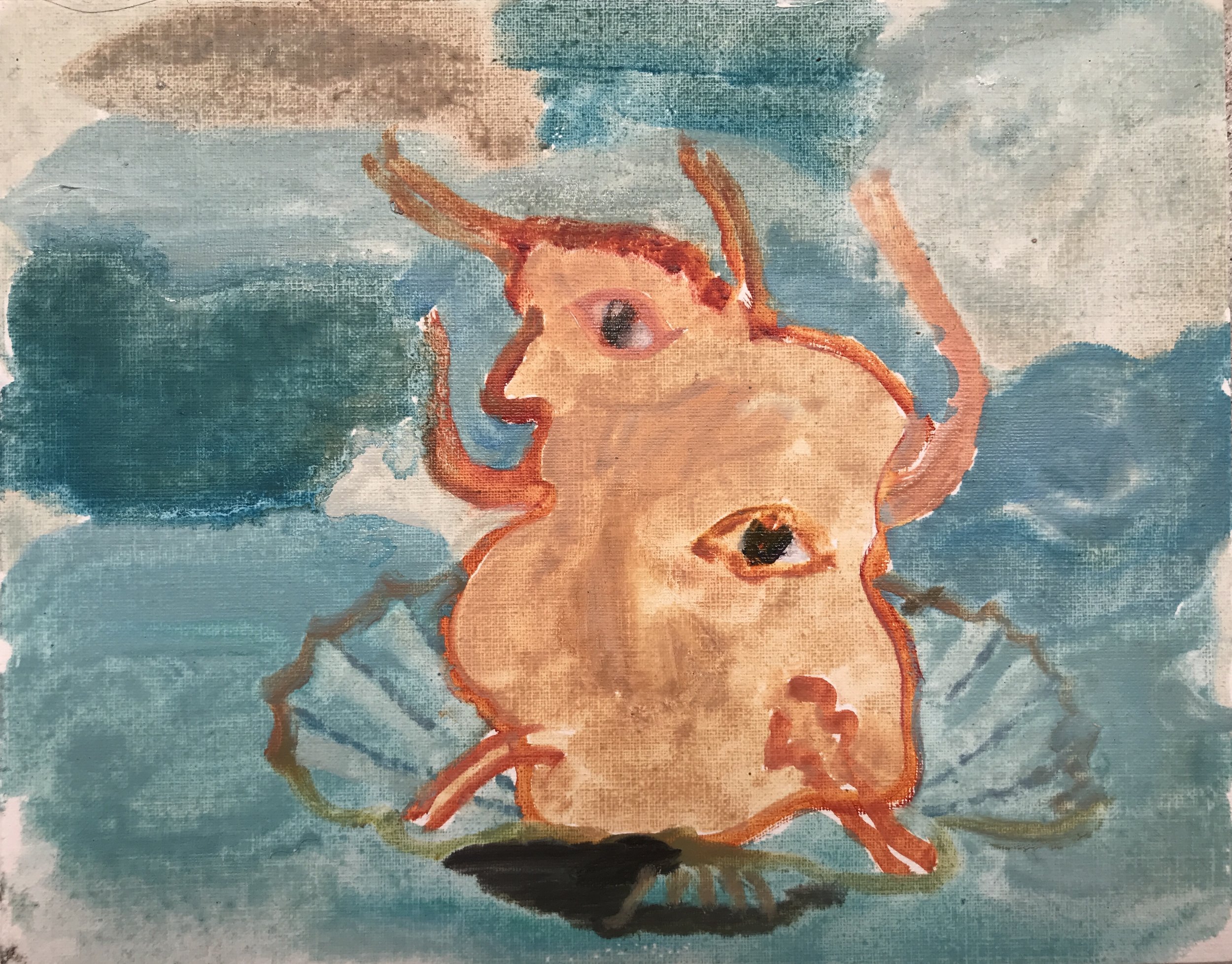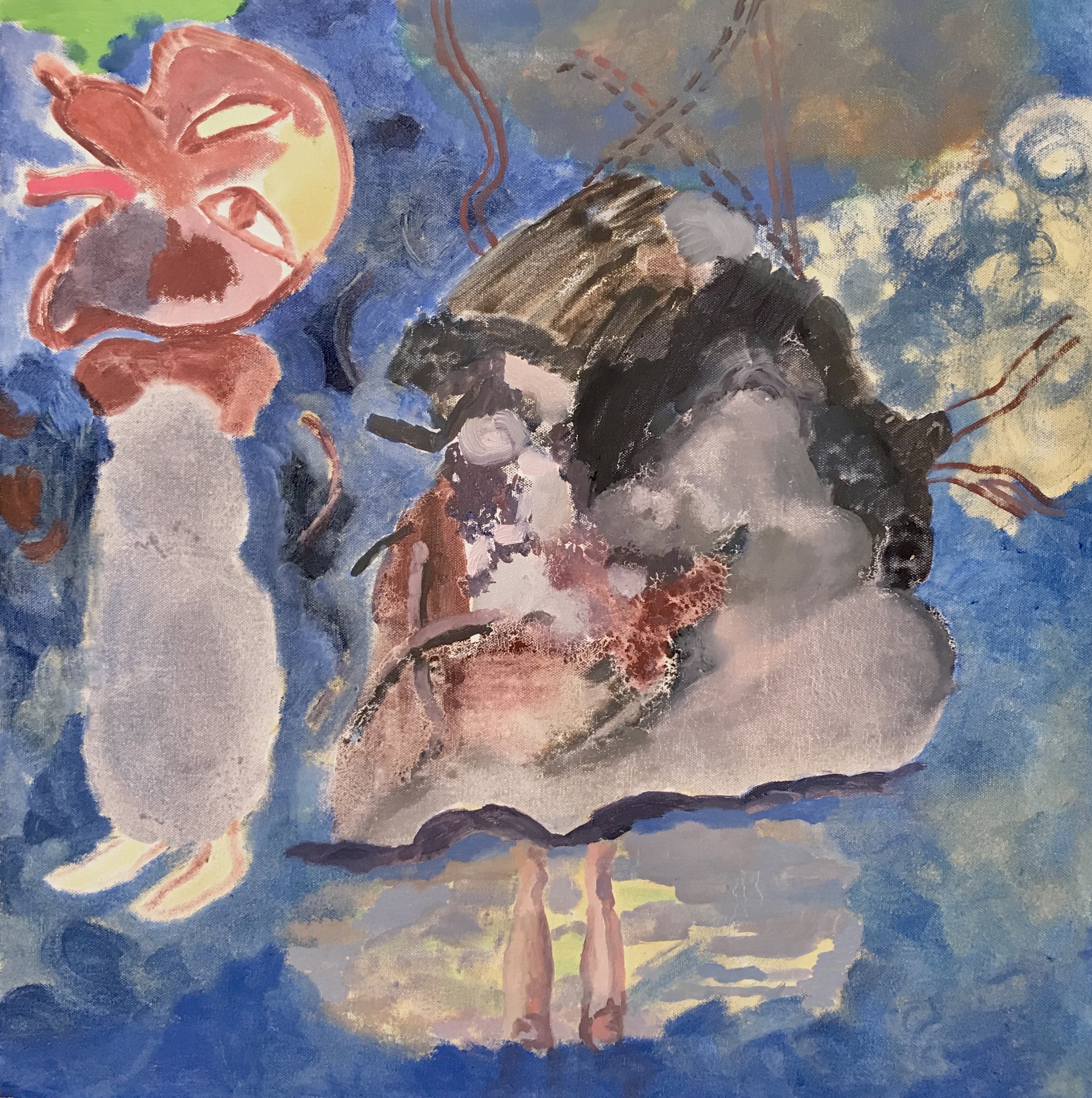Daniella Norton
Daniella’s work is an exploration of the space between the different realities that we operate in and our perception of these situations. She uses abstraction and figuration to keep us off balance and our comfort zones challenged, the amorphous worlds and dream-like figures in the work are infused with a magical and somewhat fantastical, multi-dimensional quality. In the current Tree Root Goddess series Daniella sets out to reclaim depiction of female form, to give it a deeper more fully laden context of women’s lives and meaning and connotation that are largely unacknowledged in historical depictions of the female form.
We Caught up with Daniella in the lead up to our Mothshell Ambit exhibition!
Weald - What is your process like, and what media do you use to influence your work if at all?
Daniella - I suppose my process is driven by my interests rather than being driven by materials initially, it swaps over later. I begin with an encounter, be that with an art object or an activity like walking. The encounter is a spark to connecting with interests. I am drawn to objects that link to the narrating of personal experiences. For instance, when I went to the Brancusi Studio in Paris I was struck by the sculptures, their depiction of sleep as I’m interested in the time we spend drifting in different levels of consciousness. The tree root goddess series perhaps not so obviously, is linked to this. I am interested in how these creatures exist in different physical form, and how this then suggests to me that there are many layers of consciousness and connectivity that might exist also. In creating these mythical tree root goddesses it has allowed me to journey beyond the rational to explore the representation of femininity.
Painting is a language, and I am always mindful of the medium itself, because of its long history it allows one to quote and reference and play like you might with the written word. It also has a three-dimensional aspect, the paintings are also objects and I enjoy treating the paint, even when thinly applied as an almost sculptural material. For this reason, I am less concerned with creating a verbatim image of something than the feeling that the paint is doing something.
Weald - How did you get to this process?
Daniella - I arrived at this process through a dissatisfaction with my previous attempts at making paintings. Except for the ones from the first year on my BA before painting became familiar. I realised that what excites me about painting is a feeling of going beyond what you know. My paintings often have an awkwardness about them, and I think this is because I am always trying to find a way of painting that is yet unknown to me.
Weald - What do you think of as the most important themes in your work?
Daniella - The most important themes in my work are probably connectivity (between nature and humans, animal and human, humans, and humans or hupeople), a relationship between physicality and the philosophical and feminism.
Weald - How has your practice evolved in recent years?
Daniella - My practice has benefitted from a few factors recently. I participated in the Turps Painting School Correspondence Course in 21/22, which was a valuable opportunity to receive feedback from mentors on my practice. Aside from that I am lucky to be part of an arts community in Brighton and it is the conversations and banter that really help shape my work and create an environment that is conducive to my practice. In addition to that there has been the Artist Support Pledge initiated by Matthew Burrows MBE, which has provided a supportive community that is based online and allows artists to connect globally. Art is a communicative activity in my view and it is as a result of these communities that my work has grown and developed.
Weald - Can you tell us how the Goddess series come about?
Daniella - I was invited to participate in an exhibition ’the Goddesses’ at Terrace Gallery earlier in 2023 by artist curators Lucy Jagger and Angela Johnson. The premise of the exhibition was to foreground female and non-binary artists and support each other by including emergent and more established artists exhibiting together. This led me to connect with what Goddesses might mean to me personally. It was a walk through the woods near my house with these thoughts in the back of my mind that allowed me to encounter trees blown over in past storms and connect with them as creatures that had experienced life altering events and survived, growing new branches, and thriving in a new form. This was how the tree root goddess series began. I’m now looking at how the forms of the tree root goddesses might connect with Botticelli’s Venus and how Venus might respond to our current world.
Weald - Lastly, please would you give us a 5 song studio soundtrack or podcast recommendation?
Daniella - My top podcast is To the studios by @davidauborn who is also an awesome painter.
My current studio favourites for music are Joan as a Policewoman and Lucille Bogan.
Lucille Bogan was a fascinating woman, well worth reading up on as well as listening to her music.




